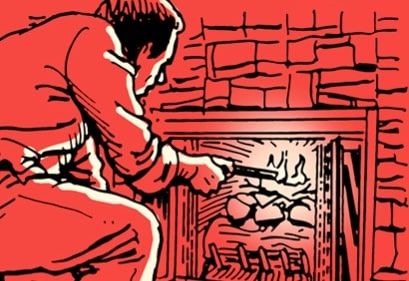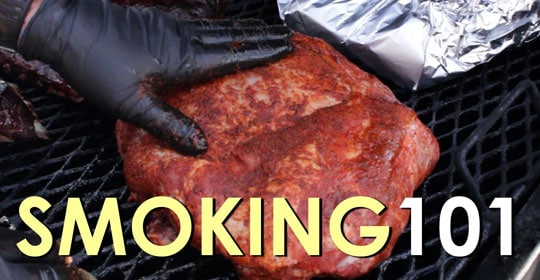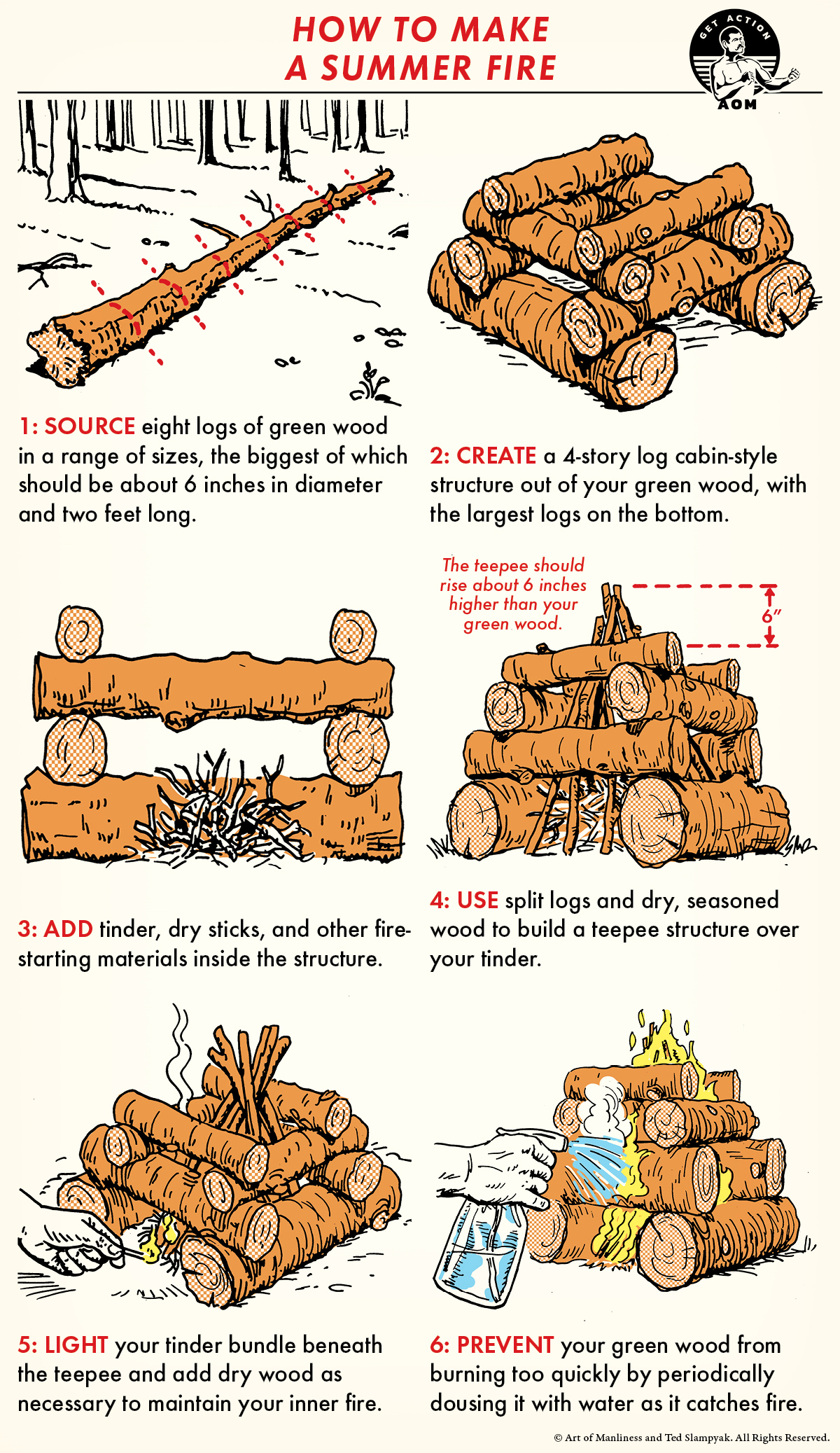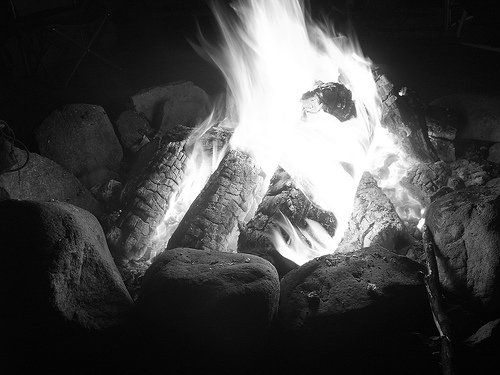
With our archives now 3,500+ articles deep, we’ve decided to republish a classic piece each Sunday to help our newer readers discover some of the best, evergreen gems from the past. This article was originally published in December 2014.
During the winter, there’s nothing like building a cozy fire in your fireplace — a warm, crackling oasis you can sit beside in your man chair while you read thick, leather-bound books and ponder manful thoughts.
There’s just one problem: whenever you fire up the fireplace, things start out okay, but then — seemingly without any rhyme or reason — smoke starts billowing into your room in plumes. You’re coughing, your eyes are burning, and everything smells like smoke. Instead of pondering manfully, all you can think is, “Why is this happening?!”
I’ve had this happen to me plenty of times — even when I thought I did everything right. I really do enjoy a fireplace fire, but hate when it turns into a smoke bomb, so last year I made it a quest to find out what you can do to build a fireplace fire without smoking yourself out of your house. Here is my report along with a video rundown.
Use Seasoned Wood
This is key. Seasoned wood burns better and with less smoke because it’s drier than the green variety. If you’re buying firewood, the best way to tell if it’s seasoned or not is by its weight, appearance, and even smell. A piece of seasoned wood will be lighter than a similarly sized, but green counterpart, and it will sound hollow when hit against another piece of wood. Green wood will also be lighter in color and generally have a stronger, fresher smell to it, while seasoned wood will usually appear darker and have little odor. Seasoned wood can also be identified by cracks on the end of the logs.
In my experience, the wood you buy in bundles at grocery stores isn’t all that seasoned, even if it’s labeled as such. Your best bet is to buy a rick of wood from someone local and check the wood before you purchase it. If the pieces you end up with still look a little green, you can always let it season for another year before you use it.
And of course, if you split your own wood, you’ll be able to season it well yourself. At least six months is recommended, and the longer the better.
Open the Damper
When I talked to a chimney cleaner about how to fix my smoke problems, the first thing he said was “make sure to check that the damper is open.” You’d think it’d be a no-brainer, but he told me this is the most common reason people have smoke coming out of their fireplace! I’ll admit, I forgot to open the damper once. Don’t be that guy.
Crack a Window
Fireplaces require large volumes of air to burn. This air comes from inside the living area and must somehow be replaced. With modern energy efficiency concerns, most houses have been carefully insulated and weather-stripped to keep out the cold drafts, but an undesirable side effect is that there is often nowhere for all that air leaving through the chimney to get back in. This can lead to fireplaces that burn sluggish and smoky. To counter that, open a window a crack.
Turn Off the Heater
As the fireplace consumes air and cold air moves into the house to replace it, the furnace is likely to come on. When the furnace comes on, air is drawn into the return vent and competes directly with the air needs of the fireplace. To avoid that, turn off the furnace. You’ve got the fire going, so you don’t need it anyways.
Prime the Flue
Before you start a fire, your chimney’s flue is probably full of cold air — especially if your chimney is built on the outside of your house. When you open the damper, this cold air in the flue will sink and come into your warm house. If you try to light a fire during this air sink, you’re going to end up with smoke coming into the house instead of up the chimney. To counteract the air sink, you need to prime the flue by warming it up. This is done by lighting a roll of newspaper and holding it up the damper opening for a few minutes. When you feel the draft reverse, you know the flue is primed, and you’re ready to start your fire.
Build an Upside-Down Fire
Many different fire lays exist, and all of them have their merits. If there’s a particular way you like to build a fire, by all means do it. But if you’re looking to build a clean-burning fire that lasts for hours, you might consider using the upside-down fire lay.
The upside-down fire lay has been used for centuries in fireplaces in Europe. Unlike traditional fire lays that require you to put tinder and smaller kindling at the bottom and larger fuel logs on the top, the upside-down fire lay reverses the sequence.
Start off by stacking your large fuel logs on the bottom of the fire grate.
Stack smaller logs on top.
Add a kindling layer (small twigs about the size of your pinky or bigger) on top of the stack.
Add some planks of cedar board.
Top off the stack with your tinder.
Light the fire from the top, and you’ll have a roaring fire in about 20 minutes. Because the fire will burn downwards, and the smoke won’t have to pass up through cold logs, the fire will burn cleaner. What’s nice about this arrangement, too, is that the fire doesn’t need much tending to keep it going.
For more details on how to build an upside-down fire, check out this article.
Don’t Build a Fire on Very Windy Days
If the wind is howling outside, there often isn’t anything you can do to prevent fireplace smoke from blowing back into your house. You’ll have the best luck in minimizing fireplace smoke if you build your fire on calm days.
Call a Chimney Sweep
If you’re still having problems after following all these tips, call a professional chimney cleaner to check to see if your chimney has any blockages or structural problems that might be causing the smokiness.
Happy firebuilding!







